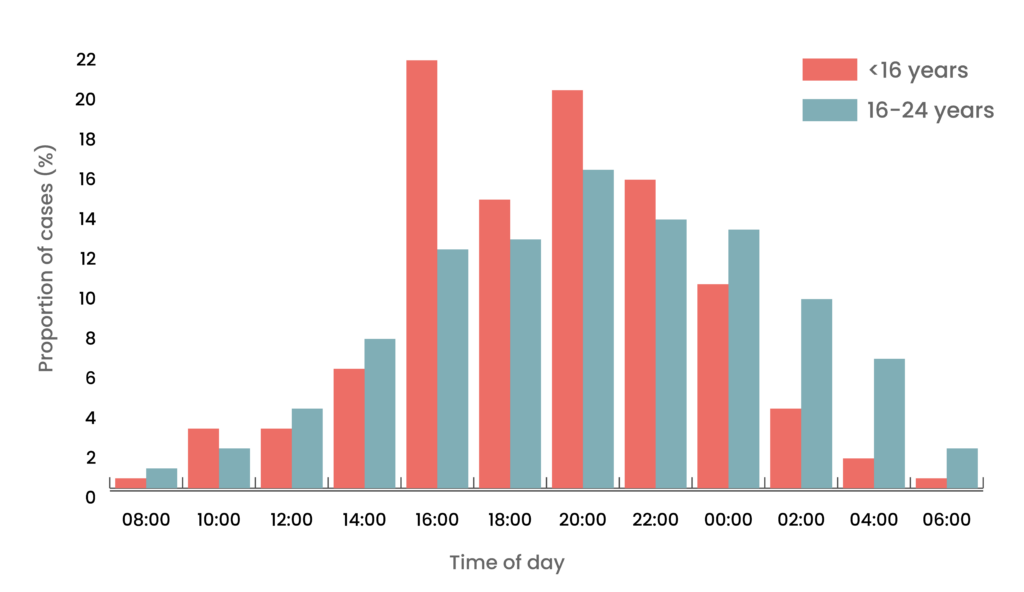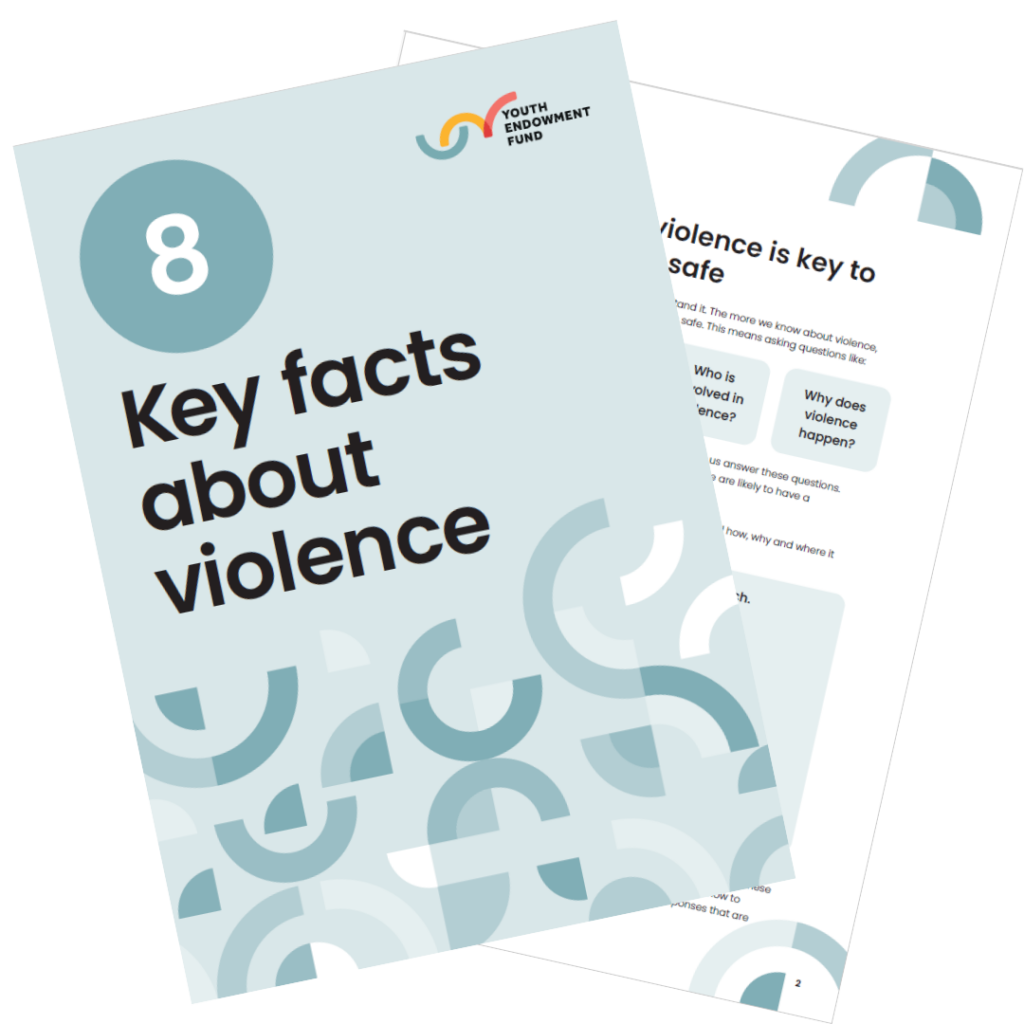
Key Facts About Violence

Key Facts About Violence
However, the exact pattern will vary across populations and types of crime. Violence involving children can decrease in the summer when they are on summer holidays and increase when they return to school in the autumn. For children in England and Wales, there is evidence that the period after the school day finishes (4pm-8pm) is especially risky for the most serious violence.
Figure 3. Timing of injuries in children (red) and young adults (blue) who attended a UK major trauma centre with stab injuries. From Vulliamy et al (2018)

Understanding when violence happens can improve our attempts to prevent it. If the time after school is especially risky, what can we do to make it safer?
For example, the Safe Passage programme in Chicago was designed to address this risk directly. Jointly run by the Chicago public schools district and police department, Safe Passage places local trusted adults along school routes at the beginning and end of the school day. These adults prevent violence by resolving disputes, deterring violence through their presence, and reliably reporting when it does happen.
Several studies have examined the impact of Safe Passage in Chicago since it launched. These studies have suggested reductions in crime and violence along the chosen routes, reductions in crime on nearby neighbourhood streets, and even reduced rates of absenteeism from school. Given these promising results, the YEF worked with the Home Office to fund an evaluation of a similar programme, Step Together, in the West Midlands to test whether the benefits seen in Chicago might be replicated here. The findings from this evaluation will be published in 2025.

“When I was in school, it wasn’t uncommon to hear about people arranging to meet after school to settle arguments. Since everyone travels home along the same routes, it’s no surprise that trouble tends to happen around that time. We work in schools to provide early support to young people who might be vulnerable to getting caught up in these situations.
“I used to do detached youth work between six and eight in the evening, engaging young people who were hanging around. We coordinate our work with other youth services in South Bristol to stagger our activities so the area is covered most of the time.
“We walk the same routes through estates, parks and shopping areas, getting a feel for where different groups hang out and gradually building relationships. If the police inform us of increased anti-social behaviour in an area, we might go there to engage the young people more positively. We often bring equipment, like footballs, to help break the ice and connect with them in their space.
“Our organisation has a strong presence in the community, so most young people know who we are. The key to detached youth work is engaging them on their level, building relationships and not giving up too quickly.”
Get your copy of our latest research resource on the key facts about violence.

